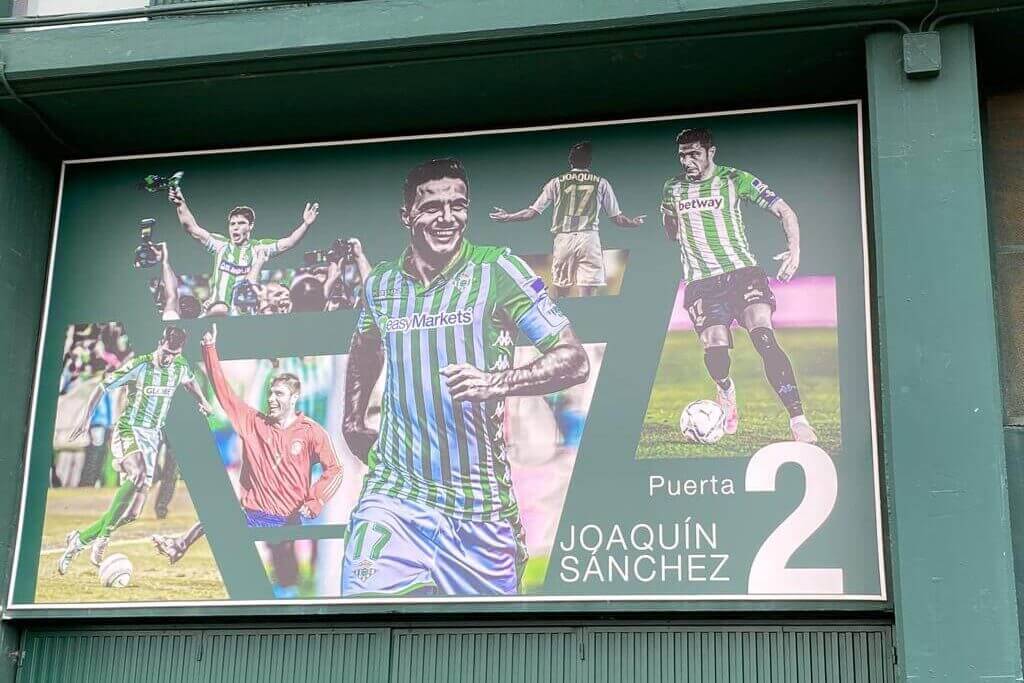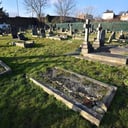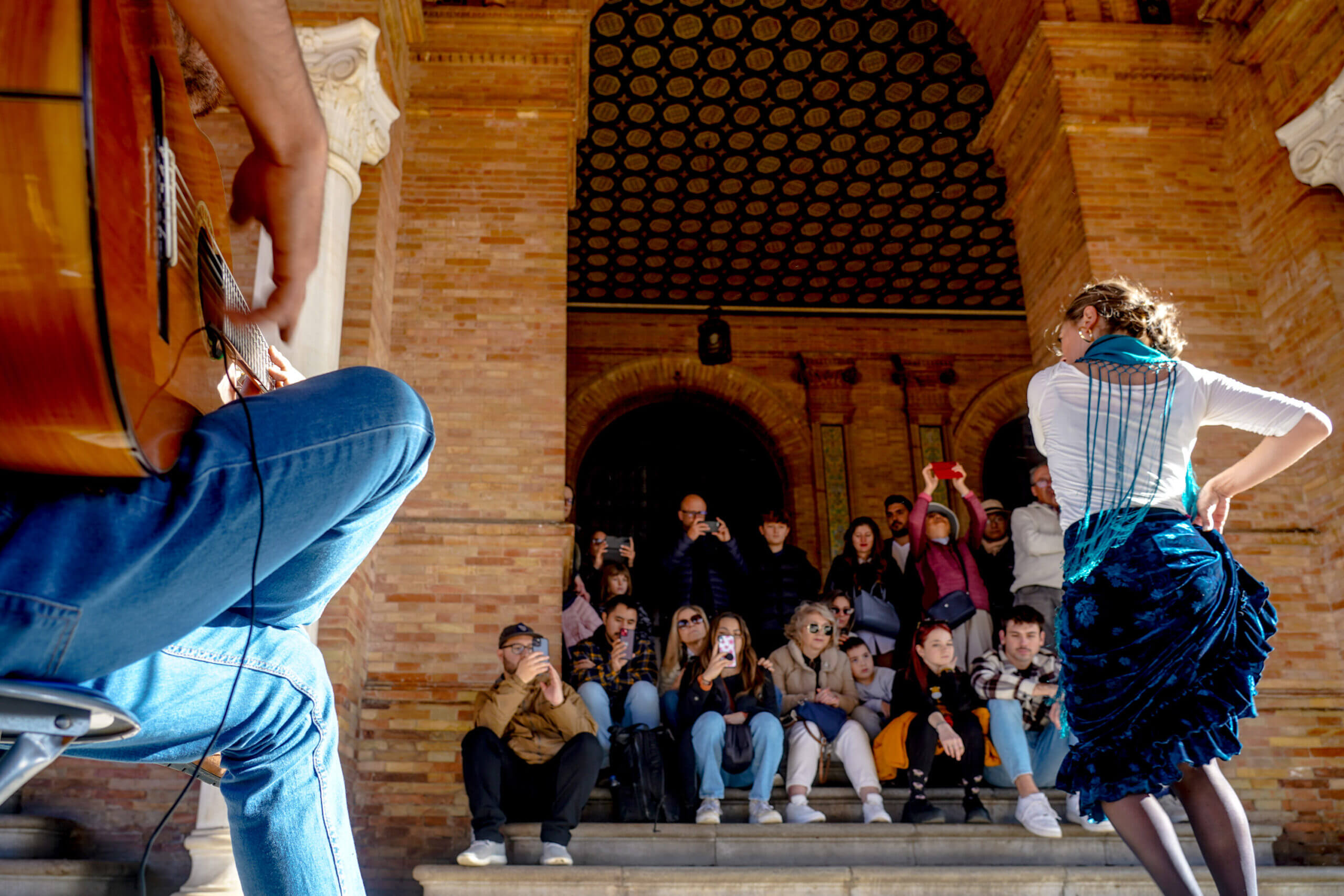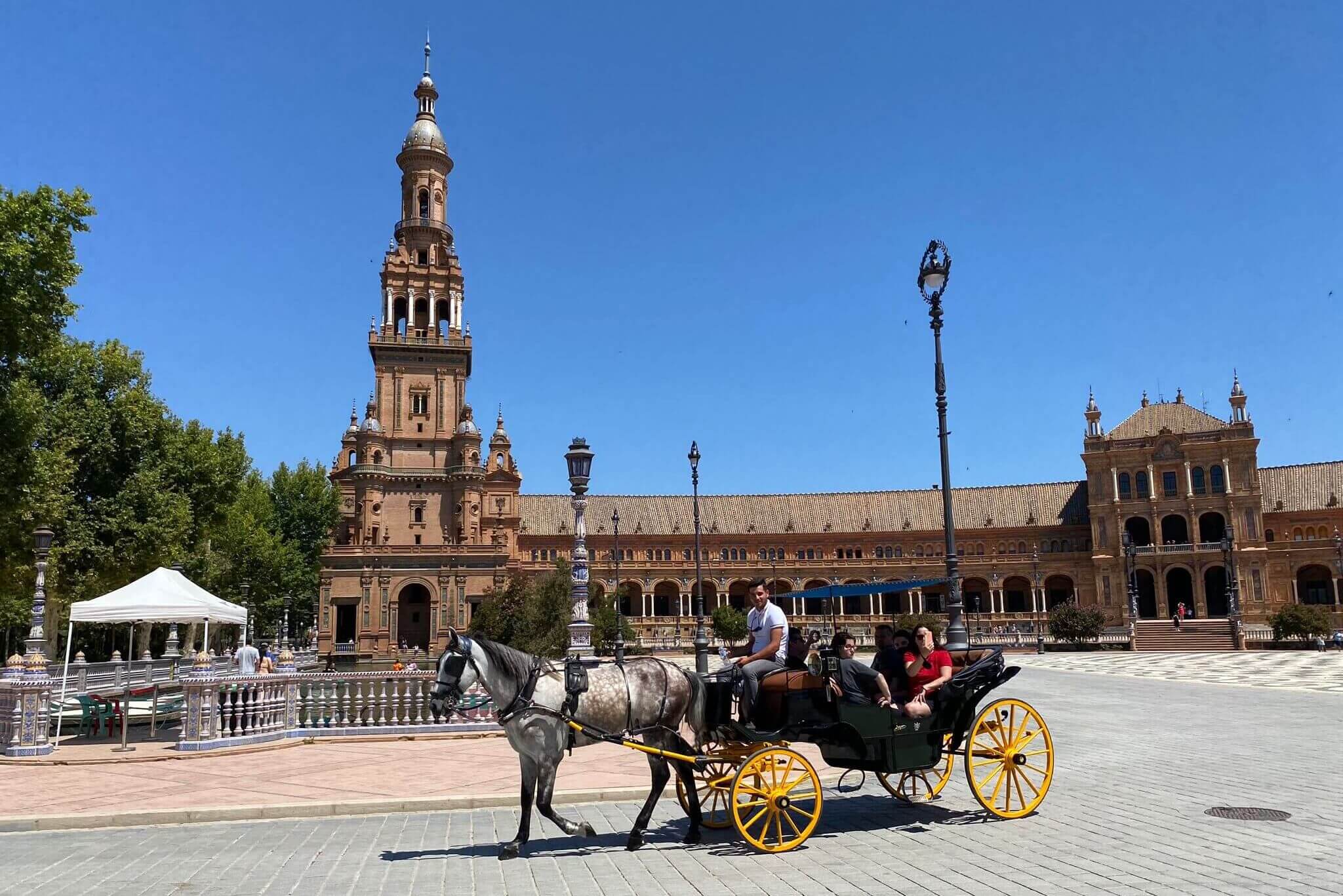Seville, where Manchester United play Real Betis on Thursday in the second leg of a Europa League last-16 tie, is beautiful. It is Spain’s fourth-largest city, with an urban-area population of 1.5million, and is the capital of the country’s biggest region, Andalusia. Very much a football town, it hosts the most intense cross-city derby in the Spanish game.
United received 2,847 tickets, priced at €45 (£40), for this trip to what is one of Europe’s sunniest and warmest cities. The weather is one reason its two La Liga clubs, Betis and Sevilla, play in stadiums that are three-quarters open to the elements.
Sevilla’s name is self-explanatory. They were founded on Burns Night in January 1890 with Scottish-born Edward Farquharson the first club president. Betis was the Roman name for the city’s Guadalquivir River. The club with the same title were born in 1907, following a split from their neighbours down the road.
The river is a big one, cutting through this great city of the Spanish south, a place also famous for bullfighting, flamenco… and home side Sevilla having 26 efforts but failing to score against David de Gea in the first leg of a 2017-18 Champions League round-of-16 tie against United.
If Manchester has one of the smaller cathedrals for a major city, Seville has one of the biggest — the third largest Gothic church in the world after St Peter’s in Rome and St Paul’s in London. The cathedral’s Giralda tower is almost as tall as the old floodlights at Manchester City’s old home Maine Road, while nearby, the Alcazar Royal Palace (look familiar? Game of Thrones filmed there) is a major tourist attraction — all three are UNESCO World Heritage sites.
Like Manchester, Seville was once a major inland port — gateway to the new world, no less.
It’s wonderful to walk through its maze of white alleyways, sampling the bars and tapas as you go. Most tapas bars open around 1:30pm and serve lunch until 4pm. Though the most heavily touristic areas by the cathedral aren’t cheap, Seville as a whole isn’t expensive and is used to welcoming visitors.
Seville’s stadiums
Seville is among the few cities in Europe that has three football grounds boasting more than 40,000 seats.
Estadio La Cartuja, located on the island of Cartuja to the west of the city centre, was built as part of failed bids to host the 2004 and 2008 Olympic Games. It seats 57,619 and regularly stages Spain internationals and Copa del Rey finals.
Sevilla and Betis have considered moving to La Cartuja, but the idea was always unpopular. Their home grounds are more centrally located and are, well… home.
Rangers fans enjoy the atmosphere outside the Cartuja before the 2021-22 Europa League final against Eintracht Frankfurt (Photo: Pablo Blazquez Dominguez/Getty Images)
Sevilla’s Ramon Sanchez Pizjuan, named after a former club president who drove the construction of the place, is one of the most distinctive in Spain. Located in the upper-middle class Nervion district next to one of the main shopping centres, it’s a tight, steep, bowl of 44,000 red and white seats that hosted the 1986 European Cup final — a shock win for Steaua Bucharest on penalties over Barcelona (Helmuth Duckadam saved all four Barca spot kicks).
There are plans — and the space — to expand but for now, it is worth visiting to see the giant mosaic outside the main stand detailing 60 clubs from around the world who had visited the stadium by the time the artwork was unveiled before the 1982 World Cup in Spain.
Betis’ Benito Villamarin, also named for a former club president, is three miles (5km) to the south.
It’s a 60,000-capacity triple-tiered, green, steep-sided stunner, surrounded by opulent housing (but also close to one of Spain’s most impoverished housing estates) and palm trees. The travelling United fans will be high up on that third tier, but the view will be better than they had at Barcelona’s Camp Nou last month.
Betis announced last week that they are going to stick a roof on the place and also build a new main stand. Populous, the architecture firm that will work on Old Trafford’s development whenever that happens, is set to enter the competition to be contracted for the work.
Los Verdiblancos (Green and Whites) are proud of their home and enjoy average crowds of 51,000 — the fourth highest in Spain and about 15,000 more than Sevilla pull in at their smaller home. Thursday’s game isn’t expected to sell out, Betis are 4-1 down from Old Trafford, but to see a crowd of around 50,000. The early-evening kick-off, at a time when most people in southern Spain will still be at work, doesn’t help either but Betis fans have to buy the tickets in addition to their season tickets.
Betis were once considered the most working-class club of the two, but the demographics have blurred and support in the city is split 50/50 these days, with Betis perhaps enjoying more support in the surrounding rural areas. That’s another reason Thursday won’t sell out — fans from outside the city would have to leave work mid-afternoon to make the start at 6:45pm local time (5.45pm UK time).

Betis have been champions once but were a yo-yo team for many years. They broke the world transfer record when they bought Brazil forward Denilson for £21.5million in 1998, but have been relegated from the top flight more times than any other club in Spain.
After appointing Manuel Pellegrini in the summer of 2020, they are currently enjoying uncharacteristic stability and are Copa del Rey holders, beating Valencia on penalties at La Cartuja last April.
Their first Seville derby in 1915 descended into a brawl between players and fans of the two clubs. Betis were under the presidency of an Englishman, Herbert ‘Papa’ Jones then.
Betis’ stadium was occupied by Italian soldiers during Spain’s civil war in the 1930s, and there’s a memorial to the area close by that was used as a concentration camp. In 1948, the ground was flooded by the nearby river. Some optimistic fans rowed to the stadium by boat — to check if the game was on as scheduled.
The club’s training ground, where 41-year-old captain Joaquin has played most of his famous pranks, is only 300 metres from the stadium.

GO DEEPER
Joaquin: The 40-year-old ‘bullfighter’ with Betis in his blood
“No words are sufficient to describe how Beticos feel about Joaquin,” says Betis season ticket holder Ian Cassidy. “He is the heart and soul of the club, on and off the pitch. He’s still playing at a very high level, although not the full 90 minutes these days.
“Best of all, he is an outright leader in the changing room with all the squad looking to him for motivation. He is also probably the funniest character in Spanish football and hosts a TV show which will likely become a full-time job if and when he ever retires.”
“You have to live to the full,” Joaquin explained to this article’s author when asked about his personality. “My personality is suited to this club, with a special feeling that goes beyond football. It’s a family, it’s a passion.”

GO DEEPER
A league title and a betting scandal: ‘Don Patricio’ is Manchester United’s forgotten link with Real Betis
Cassidy explains the particular nature of football fans in Seville as being “all about Sevilla and Betis. You don’t see anywhere near the amount of Blancos (Madrid fans) or Cules (Barcelona fans) as in other parts of Spain. What you do see is a vast number of Beticos living in Madrid, Barcelona, and other major cities. Those are generally the descendants of the working-class masses who left the south in search of jobs in the 1950s and ’60s”.
Scotland scored first against Brazil, then lost 4-1, in Betis’ home in that 1982 World Cup, while England beat Spain 3-2 there in a 2021 Nations League game.
Most people in Seville are friendly, though both clubs have a small, active, hooligan following. The police know exactly who they are and what they do — it was that group at Old Trafford last week who tugged at the dividing netting between fans but didn’t cross it.
Seville is not a dangerous city but the reputation of English fans is not a positive one. The word ‘hooligans’ is used to describe all travelling supporters from England even in mainstream Spanish outlets and the police have not been slow to act aggressively with visiting fans in recent years, so get to the ground early.
What to do in Seville?
Walk around the beautiful city and soak up the sun — then head to El Arenal, the old town bordered by the Guadalquivir.
The east bank of the river is a tree-lined promenade with views of the Triana district and the island of La Cartuja over the water. Triana, its cobbled streets were the birthplace of Flamenco, was long a Betis stronghold and is linked to Seville by a lovely bridge.

Tourists watch a flamenco show in the arcades of the Plaza de Espana (Photo: Europa Press News)
The bull ring (the fight season runs from April to October) is beautiful, regardless of your feelings about what happens in there, and there’s a museum that commemorates the famous bullfighters and explains their costumes.
Seville comes alive in April for Easter and the Semana Santa Holy Week festival. If United progress, they could be back here to play Sevilla (who hold a 2-0 lead against Fenerbahce in Istanbul) again in the quarter- or semi-finals…
The Plaza de Espana in the Parque de Maria Luisa is on the way to Betis and well worth a visit. Designed for the Spanish-American Exposition of 1929, it was once notorious as the site of public witch burnings by the Spanish Inquisition.
The Torres del Oro is a 13th-century Moorish tower by the river, which was built to protect the port of Seville, from where many Spanish expeditions left to travel around the world. The few United fans who travelled here for the mid-World Cup friendly against Betis (main photo) ended up in the bars by the river in what’s known locally as ‘Colon’, dancing to reggaeton. These bars are open very late at weekends, but shut around midnight in midweek.
Visit the Mercado (market) de la Encarnacion and walk on its huge, modern roof for more great views. Known as ‘Las Setas’ (The Mushrooms), it’s in the old quarter.
Drinking and eating
The Plaza de la Alfalfa, north of the cathedral, is lively at night — ditto Triana. There are too many bars to mention, so go with the flow if you want a beer. Cruzcampo is the main local brew.
Barrio Santa Cruz and the streets around Plaza Nueva and Plaza de la Alfalfa are all busy and usually the place where visiting football fans congregate.
A more youthful crowd go to the bars around the Alameda de Hercules, a walk of about a mile from the cathedral.
There are bars close to the clubs’ stadiums. For Betis, that’s along Reina Mercedes on the way to the ground.
Getting around
Spain has Europe’s biggest high-speed rail network and its first line was from Madrid to Seville’s Santa Justa station. You can get there on direct 300km/h (186mph) trains from the capital (two hours 30 minutes) and Barcelona (just over five hours).
Seville airport (buses to the city centre every 30 minutes, or around €23 by taxi) has numerous direct flights to the UK. (When you walk through the airport, you’re greeted with the badge of ‘Sevilla FC’ on the exit doors. When we asked Betis how much this frustrates them, one club official said: “They’ve got the airport sewn up.”) Malaga, Jerez and Gibraltar airports are all less than two hours away.
The city has an extensive bike rental scheme, which is easy to enrol in and use. The old town is full of horse-drawn carts — €70 for an hour for up to four people, if you fancy it.

Seville has a modern metro, but it doesn’t serve either the airport or Betis’ stadium.
The ground is over two miles from the city centre — around a 45-minute walk. The Line 3 bus will take you from Paseo de Cristobal Colon, by the river, to the stadium.
Bit of culture, sir?
More operas have been set in Seville than in any city in Europe. Carmen, a fictional gypsy heroine, worked in the picturesque tobacco factory which is now part of the city’s university.
Macarena (named after a fading Seville barrio full of old tapas bars) from local boys Los Del Rio became a worldwide earworm in 1993; while Silvio, a much-loved 1960s rocker from here, wrote a very popular song about Betis. Even though he was a Sevilla fan.
Miguel de Cervantes, the 17th-century author of Don Quixote and widely regarded as the greatest writer in the Spanish language, also lived in Seville and his wonderful short story The Jealous Extremaduran is set there.
Seville is a remarkable city. If you’re visiting for the game, enjoy.
(Top photo: United fans at their December 2022 friendly away to Real Betis. Manchester United/Manchester United via Getty Images)

